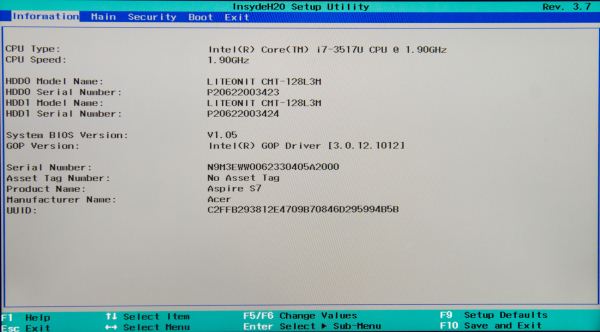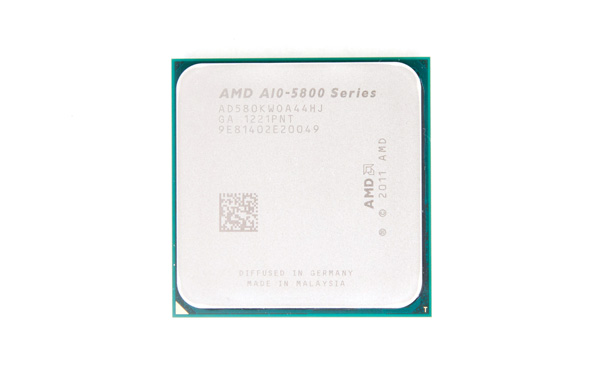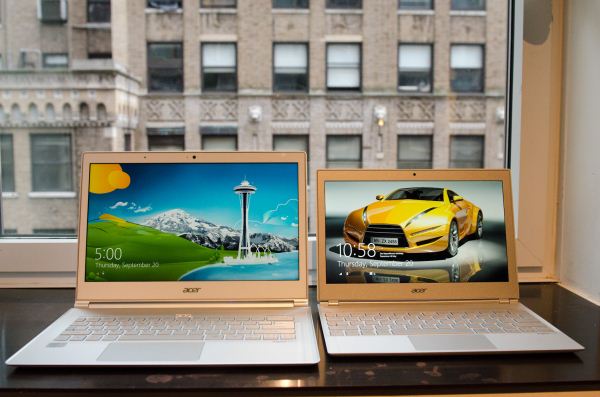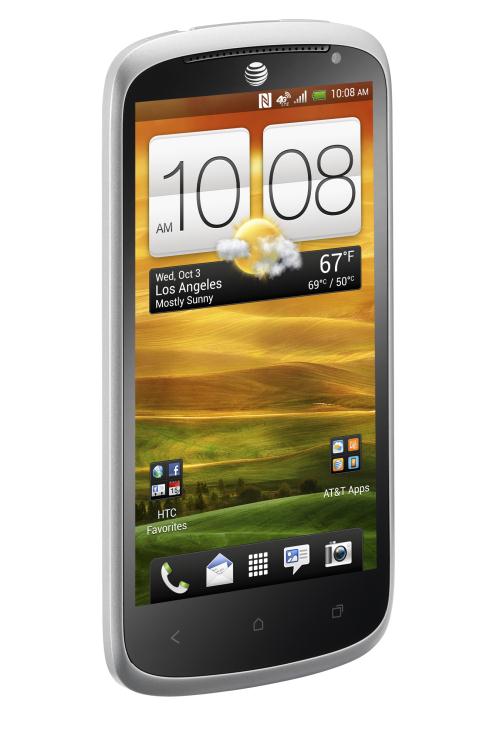Results 2,271 to 2,280 of 12096
Thread: Anandtech News
-
09-29-12, 11:30 PM #2271
Anandtech: Lian Li PC-A76X Case Review: The Limits of Aluminum
As a case designer and manufacturer, Lian Li has built their entire business around aluminum. It's one of those materials that seems to have a real marketing draw, that seems to perk up consumers, and it's understandable. Aluminum conducts heat well, and an attractive brushed aluminum finish can trump the heck out of any garden variety plastic and/or steel enclosure. It's something Lian Li have essentially created a premium brand around, and today we're taking a look at one of their most premium offerings of all, the PC-A76X.
The PC-A76X isn't just a premium enclosure, it's a concerted effort by Lian Li to produce an E-ATX/HPTX case in relatively small dimensions. Our testbed is admittedly going to seem a little mundane, dwarfed by this monstrous piece of aluminum designed and destined for only the most powerful of workstations (or enthusiast builds), but that may not matter as much as it first appears. Has Lian Li produced a knockout case, or have they missed the mark?

More...
-
09-30-12, 11:30 PM #2272
Anandtech: HP's ElitePad 900 Windows 8 Tablet: No Short Skirt, But a Couple of Long J
The major vendors have been doing the rounds out here in sunny California, gearing up a series of product launches to go hand-in-hand with Windows 8's launch later this month. Particularly interesting is the way Intel's hardware and initiatives have been working hand in hand with Microsoft's own design edicts with Windows 8; what we've seen behind closed doors isn't just a refresh for a new Windows, it's a sea change in the way interfaces and hardware are being designed for the future.
We've seen a few tablets, but today HP is announcing their ElitePad 900. Covering these events has been mildly frustrating because so many designs have been based on Intel's Clovertrail Atom SoC, and all I've been able to hear or mention has been "next generation Atom" or "Clovertrail." That's not much to go on when you're looking at x86-capable tablets running full Windows 8 (albeit 32-bit) in form factors that are mostly competitive with existing Android-based tablets.
Now that we know more about the Intel Atom Z2760, though, the details come into focus. HP's ElitePad 900 is a 10.1" tablet sporting a 1280x800-resolution IPS display in a 1.5-pound chassis, and it measures a slight 9.2mm thick. The marginal resolution is underwhelming in the wake of high-resolution Android tablets (let alone the staggeringly high resolution of the current generation Apple iPad), but the fact that it's running an x86 processor (the aforementioned Atom Z2760) along with full-fledged Windows 8 makes it worthy of attention.
HP's ElitePad 900 also features an NFC radio, 802.11a/b/g/n (2x2) and Bluetooth 4.0, and even supports a mobile broadband module and GPS. It includes 2GB of memory (presumably LPDDR2) along with up to 64GB of storage in an eMMC SSD. The battery is a 2-cell, 25 WHr polymer battery.
Where HP is breaking from the pack is in their "Smart Jacket" system, though. A Smart Jacket is essentially a peripheral you can dock the ElitePad 900 into, and jackets that were demonstrated included one that adds additional expansion ports and potentially more battery life (the Expansion Jacket) as well as one that turns it into a netbook proper (the Productivity Jacket).
This announcement is a bit of an early one, though. While the ElitePad 900 was being demonstrated, it's not geared for launch until around January 2013. Pricing has yet to be announced as well. If HP can come through and really work the Smart Jacket concept without burying it in overpriced peripherals, though, they may have a killer angle for their enterprise-geared tablet.

More...
-
10-01-12, 03:00 PM #2273
Anandtech: The AnandTech Podcast: Episode 7
We're back with another podcast. This time we start out with a discussion of Borderlands 2 and philosophies on sidequests in games. We briefly talk about TI defocusing its smartphone/tablet SoC business, Brian also gives us a look at the role of the PMIC in a modern ultra mobile platform. AMD's desktop Trinity GPU launch is discussed as well as some of the behind the scenes politics we deal with on a regular basis here.
We mention Samsung's new SSD 840/840 Pro and what the 840 means for driving SSD prices down in the future, and conclude the discussion with more about the iPhone 5 from Brian.
The AnandTech Podcast - Episode 7
featuring Anand Shimpi, Brian Klug & Dr. Ian Cutress
iTunes
RSS - mp3, m4a
Direct Links - mp3, m4a
Total Time: 1 hour 49 minutes
Outline
 
Borderlands 2 - 00:00
TI - 19:00
PMIC - 23:00
AMD Trinity GPU launch - 29:00
Ratings Systems - 50:00
Samsung SSD 840/840 Pro - 65:00
iPhone 5 - 70:00
Audience - 01:20:00
What's the phone with the best voice quality? - 01:25:00
Purple Haze on the iPhone 5 - 01:28:00
As always, comments are welcome and appreciated. Let us know what you liked, hated and want to hear more of.

More...
-
10-01-12, 11:30 PM #2274
Anandtech: NVIDIA Quietly Releases GeForce GTX 670MX and GTX 675MX for Notebooks
Testing the Alienware notebooks with NVIDIA GeForce GTX 680Ms while seeing reviews for the GK104-based GeForce GTX 660 Ti and GK106-based GeForce GTX 660 go up has been interesting because it seemed as though NVIDIA's branding had painted themselves into a corner with the GTX 670M and 675M. Both of those chips are re-brands of last generation's Fermi-based GTX 570M and 580M, respectively. So while the GK106 would be seemingly ideal for notebooks, where was NVIDIA going to put it? The GTX 660M is based on GK107 with GDDR5, and then it's a jump to Fermi for the 670M.
As it turns out, NVIDIA's branding team is as creative as they've always been, although this launch is an unusually quiet one. No press releases or fanfare, but certainly worthy of attention. NVIDIA is updating their mobile line with the GTX 670MX and GTX 675MX, both of which are based on Kepler silicon.
The GTX 675MX, essentially replacing the GTX 675M, seems to be a full GK104 chip, with 960 CUDA cores and up to 4GB of GDDR5 on a 256-bit memory bus. Assuming the performance difference between the desktop GTX 660 and GTX 560 Ti (the two chips powering the GTX 675MX and GTX 675M/580M respectively) scales down, the 675MX should be about 20% faster than its predecessor. It's clocked at 600MHz on the cores and an effective 3.6GHz on the GDDR5. I'm not 100% sure on the GPU on this one, though; it'd have to be GK104 cut down to five SMX clusters, which would be accurate to the GK106 except for the 256-bit memory bus (GK106 only supports 192-bit).
Meanwhile, the GTX 670MX appears to be using a full GK106, as it too has 960 CUDA cores but only tops out at 3GB of GDDR5 on a 192-bit memory bus. It's clocked at 600MHz on the CUDA cores and 2.8GHz effective on the GDDR5. Again this should be a fairly handsome performance improvement over the Fermi-based GeForce GTX 670M.
As an added sidebar, NVIDIA has also launched their first Kepler-based Quadro mobile GPU, the Quadro K3000M. This appears to be a heavily cut down GK106, with 576 CUDA cores and up to 2GB of GDDR5, presumably on a 128-bit memory bus.
Origin PC was the first to get into our mailbox announcing immediate availability of these GPUs, but undoubtedly they will gradually become available from other vendors as well.

More...
-
10-02-12, 01:30 AM #2275
Anandtech: AMD A10-5800K & A8-5600K Review: Trinity on the Desktop, Part 2
Last week we took a look at the GPU side of the desktop Trinity APUs. We looked at the top end 384-core Radeon HD 7660D configuration as well as the slightly slower 256-core Radeon HD 7560D GPU, both of which easily outperformed Intel's HD 4000 and HD 2500. As far as processor graphics go, Trinity on the desktop maintains a healthy lead over Intel. There's still a place for discrete GPUs but that's pretty much at the $100 and above price points.
Today we're able to talk about pricing and x86 CPU performance. Read on to see how AMD's latest APU fares against Intel's newly released Ivy Bridge based Core i3 3220.

More...
-
10-02-12, 03:32 AM #2276
Anandtech: HTC Makes the Global One X+ Official - 1.7 GHz AP37 Tegra 3, 64 GB of Stor
For a while now there has been chatter about HTC updating its One X line, and today those plans have become official with the HTC One X+. The update is a significant spec bump from the existing Tegra 3 based One X, and includes a faster version of Nvidia's Tegra 3 SoC (AP37 in the place of AP33), up to 64GB of NAND, an improved 1.6MP front facing camera, Android 4.1 Jelly Bean with Sense 4+, and a larger 2100 mAh battery. But one of the most important and interesting parts is that the One X+ includes support for LTE without using a Snapdragon S4 SoC, instead HTC will ship a One X+ with LTE support courtesy Qualcomm's MDM9215 baseband, and a version with the same GSM/WCDMA support as the existing One X through another Intel XMM6260 baseband. 
The move from Tegra 3 AP33 in the international One X to AP37 affords a jump in maximum single-core CPU clock from 1.5 GHz to 1.7 GHz, and a jump in the GeForce ULP GPU clock from 416 MHz to 520 MHz. Otherwise this is the same 40nm LPG Tegra 3 with four ARM Cortex A9s and a fifth 'shadow core' A9 for hotplugging in idle states. HTC reports an increase in performance of 27 percent over the previous One X (T3) and 37 percent more talk time battery life.   
Gallery: HTC One X+ Global





I've put together a comparison table with the details of the One X+ in comparison to the previous One X (T3) and One X (MSM8960) version also known as the One XL. The One XL doesn't go away now that the One X+ is out, either, but the One X+ with LTE does take its place at the high end. 
The One X+ also ships running Android 4.1 Jelly Bean and HTC Sense 4+ which includes improvements to Sense UI and layout. I had a chance to play with the One X+ running Android 4.1 and noted some welcome improvements to the stock HTC keyboard, and that Sense 4+ struck a good balance with the changes made in Android 4.1's UI, including the better notifications and different styling. Both the existing international One X and One S will be updated to Android 4.1 sometime in October.Physical Comparison   HTC One X (AT&T) (Internationally called HTC One XL) HTC One X (Global) HTC One X+ (WCDMA) HTC One X+ (LTE) Height 134.8 mm 134.36 mm 134.36 mm Width 69.9 mm 69.9 mm 69.9 mm Depth 8.9 mm 8.9 mm 8.9 mm Weight 129 g 130 g 135 g CPU 1.5 GHz Dual Core Qualcomm Snapdragon MSM8960 1.5 GHz Quad Core ARM Cortex A9 Nvidia Tegra 3 AP33 1.7 GHz Quad Core ARM Cortex A9
Nvidia Tegra 3 AP37GPU Adreno 225 ULP GeForce
(416 MHz)ULP GeForce
(520 MHz)RAM 1 GB LPDDR2 1 GB LPDDR2 1 GB LPDDR2 NAND 16 GB NAND 32 GB NAND 32 or 64 GB NAND Camera 8 MP with AF/LED
1.3 MP front facing8 MP with AF/LED
1.3 MP front facing8 MP with AF/LED
1.6 MP front facingBaseband On-MSM8960 2nd Gen LTE Intel X-Gold XMM6260 Intel X-Gold XMM6260 Qualcomm MDM9215 Screen 4.7" 1280 x 720 LCD-TFT 4.7" 1280 x 720 LCD-TFT 4.7" 1280 x 720 LCD-TFT Battery Internal 6.66 Whr Internal 6.66 Whr Internal 7.77 Whr (2100 mAh)
The One X+ is slightly heavier in the hands (135 vs 130 grams) but doesn't feel all that different and maintains the same external dimensions. I wasn't able to determine if the larger battery includes the higher voltage chemistry that a number of other OEMs have moved to, though it's obvious the energy density has gone up. 
The non-LTE One X+ includes the same GSM/EDGE and WCDMA bands as the previous international version (850/900/1900/2100 MHz for WCDMA, 850/900/1800/1900 MHz for GSM/EDGE) and of course the same HSPA+ capabilities since it includes the same Intel XMM6260 baseband. I don't have any word at the moment on what LTE bands will be supported on the One X+ with LTE, but with MDM9215 and possibly WTR1605 we could see more than the One XL. Qualcomm's MSM8960 SoC contains the same IP block that's inside MDM9215 and is still 28nm. It's interesting to see the One X+ using this combination as it may finally put to rest the talk of Tegra 3 being "incompatible" with LTE. 

More...
-
10-02-12, 05:30 AM #2277
Anandtech: Synology Launches 12-bay DS2413+ and Wi-Fi Enabled 2-bay DS213air
Synology has been on a tear lately, with product launches happening in quick succession. Approximately a month back, we had the launch of the 2013 2-bay lineup (DS213 and DS213+). The 4-bay lineup (DS413 and DS413j) was launched on September 18th. Today, we have the launch of two products targeting different market segments.
DS2413+
The DS2413+ is the first 12-bay tower form factor NAS from Synology in the standard business product lineup. Along with the optional DX1211, users can have up to 24 bays at their disposal. With a passively cooled CPU design and dual GbE LAN with failover support and hot-swappable drives, reliability and uptime get an added boost. With link aggregation, Synology claims speeds of up to 201.03 MBps reads and 196.87 MBps writes under RAID5. The NAS is based on the Intel Atom D2700 platform which has two cores running at 2.13 GHz.
Gallery: Synology DS2413+





The business oriented features of the DS2413+ include VAAI for improved VMware support, LUN backup software and ADS support for domains up to 100K users/ groups. Synology also takes special care to point out the photographer-friendly features and packages available for the DS2413+.
The DS2413+ is available for purchase today and is priced at $1700.
DS213air
The DS213air is one of the innovative products to grace the NAS market this year. In their quest to offer differentiating features, Synology seems to have found an interesting niche. The DS213air is based on the DS213 platform (Marvell Kirkwood based 2-bay NAS). It integrates a single band (2.4 GHz) 802.11n radio (we are awaiting clarification on the exact speeds - 150 Mbps / 300 Mbps / 450 Mbps) on-board.
Gallery: Synology DS213air





The 802.11n radio can be used in multiple ways:
- Wireless hotspot: When connected over Ethernet to a router / switch, the DS213air can be configured as a wireless hotspot to provide Wi-Fi capability in the network.
- Wireless router: When connected directly to the modem through Ethernet, the DS213air can act as a wireless router to provide Wi-Fi access to various wireless devices.
- Wi-Fi client: The radio can also be used to connect the NAS to the network wirelessly (freeing up the Ethernet port). This is unlikely to be a usage mode for most users since Wi-Fi reach / reliability will never match up to what can be obtained through a wired connection.
The other specifications are similar to that of the DS213 launched last month. The DS213air is available for purchase today and is priced at $307.
 

More...
-
10-02-12, 07:30 AM #2278
Anandtech: Acer Announces Upcoming S7 Ultrabooks with Windows 8, We Go Hands On
Last week we met with Acer to go over the fall product stack, and we’ll have a bunch of announcements over the coming two weeks all leading up to the late October launch of Windows 8. We start off today with their S7 Ultrabooks, Acer’s highest tier of Ultrabooks. We’ve preciously reviewed Acer’s Aspire S3 and more recently the Aspire S5, but the S7 goes all-in on build quality, materials, and design. 
The S7 will be available in both 11.6" and 13.3" flavors. Both models feature an all-aluminum unibody design, but the top cover material differs between the two. The 11.6" model has a brushed aluminum top cover, while the 13.3" model uses Gorilla Glass 2 as its outer surface. On the underside of the machine is a soft touch, smartphone-like plastic finish. 
The materials look and feel great in person. I was particularly impressed by the glass on the 13.3" model. The two chassis are also some of the thinnest Ultrabooks we’ve ever encountered, measuring 0.47”/0.48” (11.9/12.1mm) thick. The 13.3” models also feature a 180 degree hinge that allows the LCD to lie flat on a table, desk, or other surface where it can function as a typical tablet.

Some of the key features of the S7 series are the touch enabled 1080p displays on both 11.6” and 13.3” models, Intel 3rd Generation Core i5 and i7 processors, and pure SSD storage solutions. At least for the 256GB model it appears that Acer is using two Lite-On CMT-128L3M SSDs in RAID-0. Lite-On's drives use a Marvell controller similar to the Plextor M3 series. 
The displays looked great in person, with subjectively very good brightness, contrast and viewing angles. We'll have to get the S7s in house to truly evaluate the performance of the panels however.

The keyboard on both models felt good although the lack of a dedicated row of function keys seemed odd. Also impressive was the trackpad performance which didn't exhibit any of the usual issues we've seen from Ultrabooks thus far.
The 13.3” S7-391 will be available in two models initially, one with an i5-3317U processor and a 128GB SSD for $1400 with the second featuring an i7-3517U processor and a 256GB SSD for $1650. The S7-391 weighs 2.86 lbs. (1.3kg). The smaller S7-191 includes the same i5-3317U CPU and 128GB SSD but weighs just 2.29 lbs. (1.04kg) and will cost $1200. Both models also feature backlit keyboards with an ambient light sensor that will adjust the backlight levels appropriates. Battery life is a bit of a question still, as Acer quotes up to 12 hours with an optional battery; we don’t have details on the optional battery or the default battery configurations, unfortunately. Note also that both models feature 4GB DDR3 memory that’s soldered onto the motherboard; we’d really like to see 8GB these days, especially considering the cost and the inability to upgrade should you desire additional RAM in the future.
Gallery: Acer S7 Ultrabook Hands On Part 2





Gallery: Acer S7 Ultrabook Hands On
The full specs for the three announced models are below. Also be sure to check out our hands on video from IDF last month, also below.
Acer S7 Series Ultrabooks Model S7-191-6649 S7-391-6810 S7-391-9886 Processor Core i5-3317U
(1.7-2.6GHz, 3MB L3)Core i5-3317U
(1.7-2.6GHz, 3MB L3)Core i7-3517U
(1.9-3.0GHz, 4MB L3)Memory 4GB DDR3 onboard 4GB DDR3 onboard 4GB DDR3 onboard Storage 128GB SSD 128GB SSD 256GB SSD Display 11.6” FullHD 1080p
(Touch sensitive)13.3” FullHD 1080p
(Touch sensitive)13.3” FullHD 1080p
(Touch sensitive)Dimensions 11.17”x7.70”x0.48”
(284x196x12.2mm)12.73”x8.79”x0.47”
(323x223x11.9mm)12.73”x8.79”x0.47”
(323x223x11.9mm)Weight 2.29 lbs. (1.04kg) 2.86 lbs. (1.3kg) 2.86 lbs. (1.3kg) Operating System Windows 8 Windows 8 Windows 8 Price (MSRP) $1200 $1400 $1650 
More...
-
10-02-12, 09:00 AM #2279
Anandtech: HTC One X+ headed to AT&T along with new HTC One VX
Earlier today HTC made the One X+ official, which includes a faster Tegra 3 SoC, 64 GB of NAND for the AT&T version, LTE from an MDM9215, improved 1.6 MP front facing camera, and a larger internal battery. The One X+ with LTE will be headed to AT&T in the coming months in the same form as the international One X+ with LTE.
Alongside that availability note however is the announcement of another handset, the HTC One VX, which will be exclusive to AT&T and looks like it sits somewhere between the One S and One V. The One VX includes a Snapdragon S4 Plus MSM8930 SoC, which is 1.2 GHz dual core Krait and includes Adreno 305 graphics. MSM8930 includes the same air interface support as MSM8960 as well (UE Category 3 LTE, up to DC-HSPA+, and 1x/EVDO). In addition the One VX includes what looks like the One V's camera system, the same 5 MP CMOS sensor with BSI, F/2.0 optics with 28mm focal length, and HTC ImageChip. The One VX also includes something we haven't seen on a lot of HTC's phones lately - microSD expansion. Display is a qHD (960 x 540) 4.5" Super LCD. 
The One VX will launch on AT&T initially running Android 4.0.4 and later get updated along with the One X to Android 4.1 and Sense 4+. The way the One VX is positioned it will likely launch at a price significantly below the One X+. Physical Comparison   HTC One X+ (WCDMA) HTC One X+ (LTE) HTC One VX (AT&T) Height 134.36 mm 133.5 mm Width 69.9 mm 67.6 mm Depth 8.9 mm 9.19 mm Weight 135 g 124.7 g CPU 1.7 GHz Quad Core Cortex A9 Nvidia Tegra 3 AP37 1.2 GHz Dual Core Krait
Snapdragon S4 Plus MSM8930GPU ULP GeForce (520 MHz) Adreno 305 RAM 1 GB LPDDR2 1 GB LPDDR2 NAND 32 or 64 GB NAND 8 GB eMMC with microSD Camera 8 MP with AF/LED, 1.6 MP front facing 5 MP F/2.0 with AF/LED, VGA front facing Baseband Intel X-Gold XMM6260 Qualcomm MDM9215 On-MSM8930 Screen 4.7" 1280 x 720 LCD-TFT 4.5" qHD LCD-TFT (Super LCD2) Battery Internal 7.77 Whr (2100 mAh) Internal 6.7 Whr (1810 mAh)
The HTC One X+ and One VX announcement is a bit scant on availability details for the two devices, noting that both will be available "in the coming months." Interestingly enough the announcement notes the One 8X will be available in November. 

More...
-
10-02-12, 01:00 PM #2280
Anandtech: AVADirect Clevo P170EM: Has AMD’s HD 7970M Got Game?
A couple weeks back, we posted something of a first look at the Clevo P170EM when we did our overview of AMD’s upcoming Enduro 5.5 release. As one of the readers put it, the driver update from AMD is the “great white hope” for HD 7970M owners with Clevo notebooks. We’re told that the initial public driver release should be out in the next week or so, but prior to that launch we have our “full” review of the AVADirect notebook. The jury is actually still in deliberation as far as gaming performance is concerned—more on that in a moment—but while we await that verdict we can still take some time to check out the underlying hardware and design and see how things are shaping up.
For this review, we have two parts: this first part uses a Clevo P170EM from AVADirect equipped with a Radeon HD 7970M GPU and AMD’s Enduro technology. Part two will show how AMD’s top mobile GPU stacks up to NVIDIA’s best, the GTX 680M. With NVIDIA having just released their latest 306 series WHQL driver, we’re still running benchmarks, so we’ll need a bit more time to uncover the full story. Until then, we have the Alienware M17x R4 as a comparison point; read on for our first full review of the HD 7970M and Clevo’s updated P170EM chassis.

More...
Thread Information
Users Browsing this Thread
There are currently 17 users browsing this thread. (0 members and 17 guests)




.jpg)



 Quote
Quote.jpg)
.jpg)












_575px.jpg)
















Bookmarks